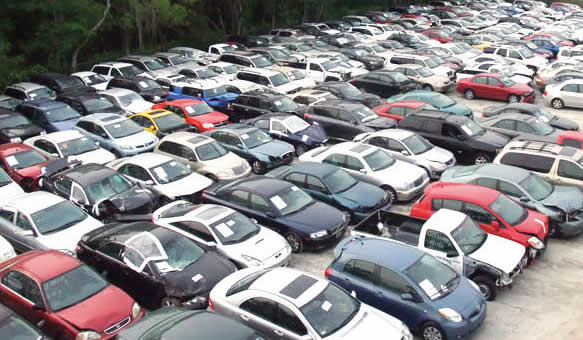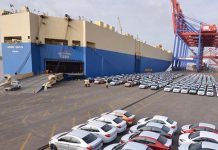Matthew Antwi is a haulier and works for a Nigerian business that exports coconuts. He regularly drives the Lomé-Cotonou road from his home country Ghana to deliver the nuts to Nigeria.
“A few years ago, it took around two hours to complete all the formalities at the border and up to three hours to get to Aflao (on the border between Togo and Ghana) from the Benin-Togo border-control post,” That was because of the poor state of the section of road between Lomé and Cotonou,” recounts the driver, seated in the cab of his truck. “But now it’s been renovated, it takes between one and two hours. It’s better for me because I waste less time, and the lighting at night means I feel calmer when driving in the dark.”
Émile Elavagnon is a carpenter in the town of Togokomè, in Togo, which is served by the Avépozo-Aného section. He, too, has a history with the road: “When the works began, we had to clear the road, which meant we lost a lot of customers. But now that it’s usable, we’ve seen some really positive changes,” he grins, adding: “We now have more customers coming from Benin and Ghana, and a lot more visibility. Delivery times are shorter because the road is better. Our deliveries to Lomé used to take us an hour, but now they take a maximum of 45 minutes,” says a delighted Mr Elavagnon.
Matthew and Émile are two of the many people to benefit from the second phase of the Lomé-Cotonou Road Rehabilitation and Coastal Protection Project (https://apo-opa.info/44BmXOj). The project, funded jointly by the African Development Bank, the European Union, the West African Development Bank (BOAD), the Islamic Development Bank (IsDB) and the Global Environment Facility (GEF), is a vector for development, regional integration and improving the living conditions of the beneficiary populations.
The total cost of the project (US$194.89 million) was funded by the African Development Bank Group (US$39.47 million) in loans and donations from the African Development Fund and the Transition Support Facility, a donation of US$19.48 million from the European Union and contributions in the form of loans or donations from the BOAD, the IsDB and the GEF.
Works associated with renovating the road allowed the refurbishment of the medical and community centre in Agbodrafo and the secondary school in Aného (Togo), to the delight of their inhabitants. As a result, as well as improving driving conditions for hauliers and users, the project has helped improve the everyday lives of local people.
Youmane Fernando Loagui, head of the laboratory at the medical and community centre in Agbodrafo, comments: “Following the refurbishment of the medical centre, staff are now working in better conditions and our ability to welcome and care for patients has improved significantly. Equipment and pharmaceutical products are stored in complete safety,” he explains, before continuing: “There’s now more space, patients feel more comfortable, and their privacy can be respected. We still remember how people used to complain about how cramped the premises were. Maintaining confidentiality was a big issue for us, particularly for patients living with HIV/AIDS, because they often want to remain anonymous. All that now belongs in the past.”
The refurbished laboratory in Agbodrafo is attracting more people and it is now considered one of the best in the project area.
“We realise the positive impact that infrastructure can have on the living conditions of local people. Following the renovation of the road, our business is doing well, and our living conditions are better, and that’s very motivating,” comments Mr Elavagnon.
The Lomé-Cotonou Road Rehabilitation and Coastal Protection Project (Phase 2) is a flagship infrastructure project in Togo and is aligned with two of the Bank’s five strategic priorities, namely “Integrate Africa” and “Improve the Quality of Life for the People of Africa”.
It is contributing to enhancing the level of service in the transport logistics chain and keeping traffic flowing on the corridor between Abidjan and Lagos, as well as improving the living conditions of residents in the project’s intervention area.
The project is also strengthening the resilience to climate change of infrastructure in the coastal areas of Togo and Benin. The project provides a direct benefit to transport users and indirectly benefits 1.7 million people in the two countries.














